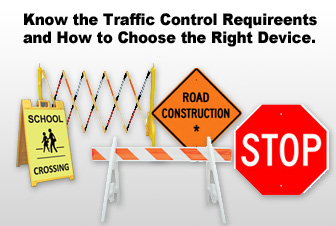How Safety Network can Save You Time, Stress, and Money.
Table of ContentsOur Safety Network PDFsThe Best Strategy To Use For Safety NetworkSome Known Factual Statements About Safety Network Unknown Facts About Safety NetworkThe Safety Network PDFs
The stages within a ring are numbered as shown in Figure 7-2. Dual-Ring Controller Device Includes 2 interlocked rings set up to time in a preferred sequence as well as permit simultaneous timing of respective phases in both rings, based on the constraint of the barriers (compatibility lines). Traffic control. Each ring may consist of approximately 2 stages in each of its 2 obstacle teams, for a total of eight phases.Barrier (compatibility line) A reference point in the assigned sequence of dual-ring as well as multi-ring controller systems at which rings are interlaced. Barriers guarantee conflicting phases will not be selected or time concurrently. At a barrier, rings terminate the current stage and also go across the obstacle all at once, as highlighted in Number 7-3.
If a call does not exist in among the rings when the obstacle is crossed (from the other stage team), a stage is picked because ring to be activated by the controller in an established manner. Referring once again to figure 7-3 in the absence of telephone calls on Phases 7 as well as 8, Stage 2 as well as Stage 6 end to service a telephone call on Stage 3.
Safety Network Can Be Fun For Anyone

Establishing Summary Minimum Eco-friendly The absolute minimum duration of the stage's eco-friendly indication. The stage can not space out or be forced off throughout this period. Variable Initial Green A time computed from the number of approach detector actuations throughout red. In the absence of a stopline detector, it permits adequate time to service lorries queued in between the stopline and an advance detector.
The period of this period is affected by associated criteria including Added Preliminary (amount of eco-friendly added per actuation) as well as Optimum Preliminary. Pedestrian Stroll The minimum period of the Walk sign for pedestrians. The phase can not space out or be compelled off during this period. Pedestrian Clearance The repaired period of the Flashing Don't Stroll indication for pedestrians.
Safety Network Fundamentals Explained
Green Extension The amount of time whereby the environment-friendly is expanded after a lorry is detected. If the minimum green, variable initial green, Walk, and FDW have all expired, and no method detector input is currently On, the phase green can terminate (void out) if the moment void in between consecutive cars exceeds the green extension time plus the time the detector input continues to be On while the lorry is being picked up.
This criterion bypasses Eco-friendly their explanation Extension, yet none of the various other criteria above. Yellow Clearance The fixed duration of the yellow sign that constantly complies with the eco-friendly indication. Red Clearance The moment throughout which both the terminating phase, and also the adhering to conflicting phase(s) concerning to begin, concurrently present a red indication - Traffic control signs.
The "quantity" choice increments a preliminary green period timer each time an automobile is identified while the phase is red. The minimal eco-friendly is timed as the greater of the regular minimum green and also this computed preliminary green, approximately a maximum. In the lack of stopline detectors, it can be used to count the variety of cars waiting before the breakthrough detectors as well as enhance the minimal environment-friendly, if needed, to remove this line.
Safety Network for Dummies
One such series can be used on one road (one barrier team), while a various series is used on the other road. Series Summary Leading Left Turn Series begins with Phase 1 as well as Stage 5, the opposing turns moving together. As demand ends or optimum green is reached on either Stage 1 or Stage 5, the corresponding left-turn is ended after the proper modification as well as clearance periods, and also the opposing thru activity (Phase 2 or Phase 6) is given an eco-friendly indicator simultaneous with its coming with left-turn.
As need finishes or maximum environment-friendly is gotten to on Stage 5, that left-turn is terminated after the proper change and clearance intervals - https://gcc.gl/EZv2B. The opposing thru movement, Phase 6, is launched to run with Stage 2. As demand finishes or maximum environment-friendly for Phase 2 is gotten to, it is terminated after the correct modification and also clearance intervals, at the obstacle line.

Our Safety Network PDFs
Input Description Automobile Detector Call Enters a lorry need for solution right into the appropriate stage of the controller unit. Pedestrian Detector Telephone Call Enters a pedestrian need for solution right into the associated phase of the controller device. Hold Command that preserves the existing right of way and also has different reactions, as follows depending upon operation in the vehicle non-actuated or actuated mode: For a non-actuated stage, energization of the hold input keeps the controller device while out stroll period with eco-friendly and walk signs presented.
De-energization of the hold input and also with the stroll period timed out causes the controller unit to progress right into the pedestrian clearance period. Re-application of the hold input while timing the pedestrian clearance part of the eco-friendly interval neither hinders the timing of this duration nor the termination of the stage.